Making Babies, The Science Book, and more...
By The Editors
Short takes on nine books
Short takes on nine books

DOI: 10.1511/2002.13.0
Surprises leap from every page of David Bainbridge's Making Babies: The Science of Pregnancy (Harvard University Press, $26). Did you know that female ferrets can die if they don't have sex? (Failure to mate inhibits ovulation, which raises estrogen levels, which in turn suppresses the animal's immune system and puts it at risk of infection.) Has the news coverage of frozen test-tube babies led you to believe that only humans put their embryos in suspended animation? (Marsupials achieve the same result by shifting their hormones.) Had it escaped your attention that before reaching puberty some boys appear to be girls? (The cause is an inborn enzyme deficiency that delays the development of external male genitalia until adolescence.) Had you been laboring under the mistaken impression that ontogeny recapitulates phylogeny? (Ernst Haeckel supported his erroneous thesis linking evolution and development with the picture below, some elements of which he faked.) Bainbridge, a lecturer at the Royal Veterinary College in London, peppers his writing with many such spicy facts as he surveys the fascinating and often enigmatic biology of reproduction.
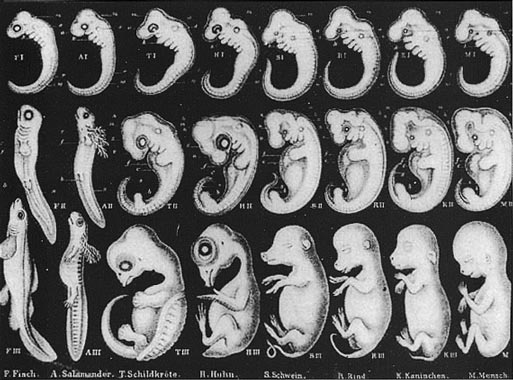
From Making Babies: The Science of Pregnancy
In 1961, Leonard Hayflick discovered that cells can only divide a limited number of times before they expire. The larger this "Hayflick limit" is, the longer the life span of the organism. Normal human cells can divide about 50 times, a number that predicts a potential life span of 120 years. People almost never reach that age because their telomeres (the ends of chromosomes) get shorter as cells divide, like the burning fuse of a bomb, and when they reach a critically short length, the cells accumulate damage and die. The only ones to escape this fate are cancer cells (like the HeLa cells shown below), which are immortal and multiply unchecked.
The Hayflick limit is just one of the 250 discoveries, each illustrated with a full-page color photo, described in The Science Book (Cassell & Co., $45). Covering disciplines from mathematics and astronomy to evolution and medicine, these fresh, accessible accounts present chronologically the most significant scientific achievements of history, from the invention of counting to the sequencing of the genome. Edited by Peter Tallack with overview essays by Martin Rees, Steven Pinker, W. Daniel Hillis, Richard Dawkins and Jared Diamond, thishefty coffee-table book should appeal to the scientist in everyone.
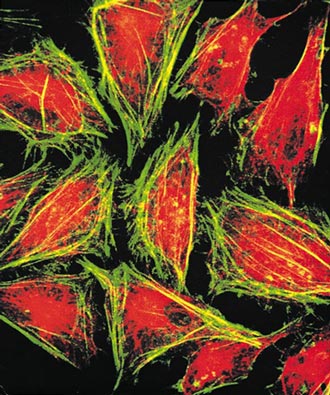
From The Science Book
The ghostly grave sites of Sun-like stars are examined by astronomer Sun Kwok in Cosmic Butterflies: The Colorful Mysteries of Planetary Nebulae (Cambridge, $29.95). Scientists now know that these phantom forms represent the shells of dust and gas exhaled by an aging star in its death throes, but investigators still don't understand some of the fine structure that's been revealed in images made by the Hubble Space Telescope. In this popular account, Kwok offers an up-to-date view of what we do and don't know about the physical properties of planetary nebulae and how they come to have the shapes they do. The book is filled with colorful images of these nebulae showing their various manifestations and the curious doodads some of them sport. Below, the Saturn Nebula (NGC 7009) in Aquarius displays mysterious Fast, Low-Ionization Emission Regions, or FLIERs (pink structures), which are likened to bullets ejected from the dying star at five times the speed of sound.
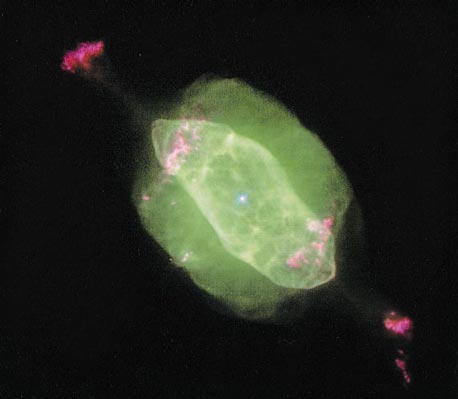
From Cosmic Butterflies: The Colorful Mysteries of Planetary Nebulae
It's hard to imagine contemplating Frederic Church's landscape, The Natural Bridge, Virginia, without understanding implicitly his love of earth science. By the very nature of what he chose to accentuate, his fascination with the forces of geomorphology shines through. Still, the degree to which Church and other landscape artists of the mid-1800s were directly influenced by geology and geologists may come as a surprise. In her scholarly, yet eminently readable and amply illustrated treatise on the subject, The Anatomy of Nature: Geology & American Landscape Painting, 1825—1875 (Princeton, $45), Rebecca Bedell paints us a detailed picture of how the 19th century's "fashionable science" molded the art of Thomas Cole, Asher Durand, Church, John Kensett, William Stanley Haseltine and Thomas Moran. Seldom has the union of the arts and sciences come to such good effect.
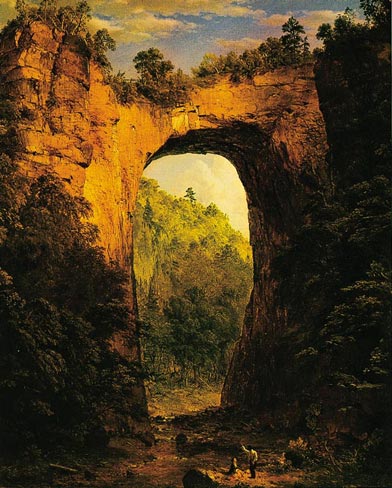
From The Anatomy of Nature: Geology & American Landscape Painting, 1825–1875
The personalities and controversies that have contributed to the glamor and allure of the Nobel Prize are explored by Burton Feldman in The Nobel Prize: A History of Genius, Controversy, and Prestige (Arcade, $29.95). Feldman provides lively, fascinating portrayals of Alfred Nobel and his honorees and tracks the evolving preferences, quirks and mistakes of the awarding committees. He focuses on why Nobel laureates have become so widely exalted—the 1903 physics prize made Marie and Pierre Curie fashionable enough to be caricatured (see below) in Vanity Fair—and how this celebrity and the controversies surrounding many winners have contributed to the Prize's enormous prestige. The book's useful appendices include a chronology of prizes for each subject area; lists of prizes by value of prize and citizenship of prize winner; and separate listings of women laureates, families with multiple laureates and Jewish laureates.
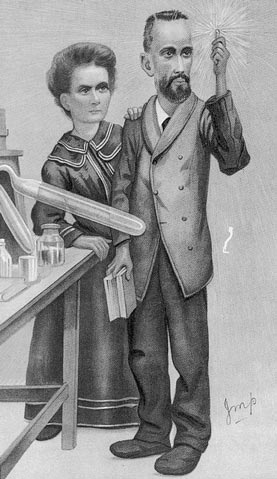
From The Nobel Prize: A History of Genius, Controversy, and Prestige
The Politics of Excellence: Behind the Nobel Prize in Science (W. H. Freeman, $30), by Robert Marc Friedman, is based on a painstaking study of the Nobel archives, which are unfortunately available only through 1950. Friedman critiques the process for awarding the Nobels in chemistry and physics and closes with reflections on what the role of prizes should be in honoring the achievements of scientists in the 21st century.
In Our Cosmic Habitat (Princeton, $22.50), Martin Rees (Cambridge professor and Astronomer Royal of Great Britain) builds a rationale for the search for life and intelligence afar. Perhaps in another 20 years we will be pointing out remote Earths to young stargazers and beginning interstellar conversations! Rees shows us stars in their galaxies and the darker spaces between, wherein the bound clusters of galaxies drift steadily apart. By the year 2010, issues regarding the fate of our expanding cosmos may be settled. Yet organic life depends on conditions fine-tuned long ago. Is our presence, then, the intended design of Providence? Or, amidst a large, far-flung stock of expansions, are watchers like us but few? We have our hints but not yet a convincing theory able to tell us whether a multiverse exists.
Ample in scope, this explicit, confiding, helpful, modest and good-humored book arises from a recent lecture series spanning astrophysics and cosmology. Using not one full-fledged equation—only fresh diagrams and clear, personal prose—Rees, a masterful theorist, brings readers a sheaf of insights.
Barro Colorado Island—created when the Chagres River was dammed during construction of the Panama Canal, its rising waters isolating six square miles of land—must be the world's most thoroughly studied patch of tropical forest. Administered by the Smithsonian Institution and populated by researchers from around the world, it's a treasure of accessibility, preservation and predictability for all kinds of field work. In The Tapir's Morning Bath (Houghton Mifflin, $25), an engaging ramble among the island's people and other organisms, Elizabeth Royte explores the social reality of the Sigma Xi motto, "companions in zealous research." The tricky business of testing hypotheses amid the complexities of the great outdoors—from the problems of getting decent data to the larger questions of ecology and evolution—gets full, informed and sensitive treatment. And so do the scientists: Diverse and eclectic, they are portrayed as compulsive but socially sensitive and mutually supportive rather than competitive.
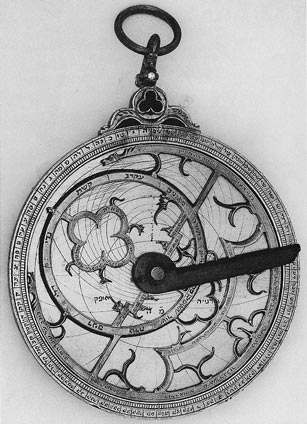
From Calendrical Calculations: The Millennium Edition
 Would you like to know the date of Good Friday in 1776, or when Ramadan will start in 2003? Then Calendrical Calculations: The Millennium Edition, by Edward M. Reingold and Nachum Dershowitz (Cambridge, $37.95), is the book for you. It describes how to calculate 25 calendars worldwide and convert between them. The authors present algorithms for classical calendrical calculations once made with the aid of instruments like the 16th-century astrolabe shown below. The CD-ROM that's included contains, among other things, the Lisp code that implements the calendar functions in the book, along with both Java and Mathematica implementations of the code, and an applet for converting dates. (A conversion applet can also be found on the book's Web site, http://www.calendarists.com.) With this book on your shelf, you'll never miss out on a date.
Would you like to know the date of Good Friday in 1776, or when Ramadan will start in 2003? Then Calendrical Calculations: The Millennium Edition, by Edward M. Reingold and Nachum Dershowitz (Cambridge, $37.95), is the book for you. It describes how to calculate 25 calendars worldwide and convert between them. The authors present algorithms for classical calendrical calculations once made with the aid of instruments like the 16th-century astrolabe shown below. The CD-ROM that's included contains, among other things, the Lisp code that implements the calendar functions in the book, along with both Java and Mathematica implementations of the code, and an applet for converting dates. (A conversion applet can also be found on the book's Web site, http://www.calendarists.com.) With this book on your shelf, you'll never miss out on a date.
Click "American Scientist" to access home page
American Scientist Comments and Discussion
To discuss our articles or comment on them, please share them and tag American Scientist on social media platforms. Here are links to our profiles on Twitter, Facebook, and LinkedIn.
If we re-share your post, we will moderate comments/discussion following our comments policy.